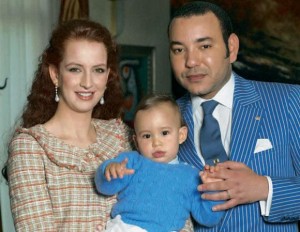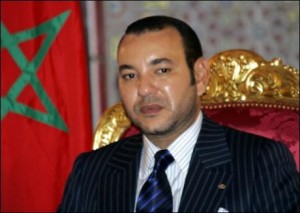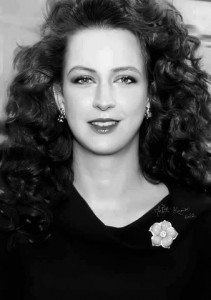Morocco’s drive to emulate Dubai by turning itself into a playground for rich Europeans is hurting lending at home as cash-strapped banks are hit by investments in holiday resorts that soured in the global financial crisis.
Loans to homebuyers and companies grew at the slowest pace in a decade last year through November, according to central bank data. In September, the North African kingdom’s central bank allowed banks to reduce reserves to increase money in circulation.
Morocco, like Dubai, was in the midst of a major tourism expansion when the global financial crisis caused investment to tumble, saddling developers, banks and investors with soured real estate debt. Lending for development surged in the two years before the market stalled in 2009, peaking at 18 billion dirhams ($2.1 billion) in 2007, said Gabriel Matar, head of Middle East and North Africa hotels at Jones Lang LaSalle Inc. (JLL) He said much of the debt will mature this year, leading to property sales.
“Moroccan banks are working out their overexposure to commercial real estate, mainly tourism-related, which will limit the amount of their new engagements in 2013,” Matar said by e- mail. “The Moroccan market isn’t mature enough to recover all these projects, which are too big to be completed by just Moroccan players.”
Boom Times
Mortgage growth peaked at 57 percent in the first 11 months of 2007 and lending to developers jumped almost six-fold in that period, according to data compiled by the central bank. Like in Dubai, projects stalled as the U.S. housing slump morphed into a global banking crisis.
The Arab Spring uprisings that toppled North African regimes in Tunisia, Libya and Egypt largely bypassed Morocco, where economic growth slowed to 2.9 percent last year, from 4.9 in 2011, International Monetary Fund data shows. A drought caused agricultural output to drop by 8.4 percent in the third quarter. The country’s trade deficit widened to 11.9 percent as of the end of November, the central bank said.
Mortgage lending slowed partly because cash-poor developers are struggling to get financing to build, said Zineb Masrour, a Casablanca-based senior capital manager at CBRE Group Inc. (CBG)
‘Obviously Overexposed’
“Banks are obviously overexposed to the real estate market and the priority is to complete the projects they’re already involved in and slow financing to sensitive projects such as tourism or high grade residential,” Masrour said in a telephone interview. “These projects were mainly targeting foreigners, who were strongly investing a few years ago but they’re not here anymore.”
Work on six mega-resorts, part of a 9 billion-euro ($11.8 billion) development drive, ground to a halt, prompting foreign investors to exit. Among the largest was Taghazout, which was to include a hotel and villas under the Raffles brand, a polo club and a beach club in its first phase, Matar said.
Total private sector lending grew by 2.8 percent in the 11 months through November, the slowest pace since 2002 when the growth rate was 1 percent, according to central bank data. Loans for housing rose 6.8 percent in the 11 months through November, the smallest increase since 2002, according to data compiled by the central bank. Mortgages overall gained 6 percent, also the slowest pace in a decade. Morocco on Sept. 25 cut its reserve ratio by 2 percentage points to 4 percent, citing a “liquidity shortage.”
‘Selective Approach’
The banking sector has adopted “a rather selective approach in the treatment of requests for funding” in real estate, said Samir Hadjioui, deputy general manager at Credit Immobilier et Hotelier, the Moroccan government-run mortgage bank.
Over the course of the first nine months of 2012, mortgage rates ranged from 5.5 percent to 6.75 percent, while those offered to developers had rates of 6.21 percent to 7.75 percent, he said.
The Moroccan government adopted incentives to encourage the building of low-cost subsidized housing in the nation of about 32 million. A state fund known as FOGARIM guarantees mortgages as long as 25 years for low-income workers and those whose earnings vary seasonally. The loans can cover as much as 100 percent of the purchase price and apply to homes that don’t exceed 200,000 dirhams.
“After the euphoria in 2007 and 2008, the Moroccan real estate sector has seen its players rationalize their approach to projects to better answer demand,” Hadjioui said.
Selling Pressure
Companies are now facing pressure to pay off or restructure their debts, either construction loans or financing for land purchases, as they come due, Matar said.
“In 2013, through indirect pressure by banks, we will see some projects or land being offered for sale, since we will be hitting the normal duration of a loan where it would be negotiated,” Matar said.
Property transactions dropped 12 percent in the third quarter from a year earlier, according to government data. Residential sales fell 9.7 percent by volume and prices dropped 0.4 percent, led by a 6.3 decline in villa prices. The central bank estimated that residential transactions slumped by 10 percent, land deals by 17.3 percent and commercial transactions by 9.7 percent.
Morocco’s “Vision 2010” tourism strategy sought to more than double the number of visitor beds to 230,000 in the decade to 2010. About half of that amount was built by 2008, when the credit crisis starved the market of buyers and investors. The construction of six resorts, known as Azur Plan, was started in 2001 with the support of King Mohammed VI.
Tourism Goals
Tourist visits climbed to 9.3 million in 2011, close to the kingdom’s target of 10 million, according to the Ministry of Tourism’s website. About 83 percent of the visitors were from Europe.
The government “highlighted six resorts to be completed, and less than half” were built, Matar said. “They are now in a situation where they have to relaunch the vision and make it 2020, or 2025 even, to meet the goal”
Property owners in parts of the kingdom including Marrakech are “stuck with massive numbers of unsold new builds in large golf-course projects and other similarly secondary residence projects,” Tim McTighe, a manager at broker Fes Properties a based in the northern Moroccan city, said by e-mail. That prompted them to offer villas for sale at 50 percent and 75 percent their 2009 price, he said.
Price Cut
Some homes in the center of Marrakech priced at 20,000 dirhams a square meter two years ago can now be had for 12,000 dirhams a square meter and occasionally for as little as 8,000 dirhams a square meter, he said.
The Taghazout project is now being restarted, along with the bigger Azur Plan with a new goal to double tourists by 2020, the government said.
Reviving the tourism property market will be challenging as Europe, Morocco’s main source of visitors, tries to overcome its fiscal debt crisis. European banks may have to sell as much as $4.5 trillion of assets through 2013, which may limit lending and curb growth in Greece, Italy, Ireland, Portugal and Spain by as much as 4 percentage points, the International Monetary Fund said in October.
Foreigners Gone
“The customers have changed, especially in Marrakech,” Younes Sebti, finance director at Moroccan developer Alliances Developpement Immobilier SA (ADI), which is involved with Taghazout, said in a Dec. 10 interview. “There are fewer foreigners buying with the euro crisis, but this is cyclical. The fundamentals are still the same and we remain confident.” He declined to comment on the progress of Taghazout.
The site of Samanah, designed to include three five-star hotels and villas ranged around a golf course on the outskirts of Marrakech, is dotted with foundations and piles of construction materials. No workers were visible on the site during a visit in December.
“There is a decline in demand because visibility isn’t clear for purchasers who don’t know how the sector will be in two or three years,” Badr Alaoui, a Marrakech-based real estate broker, said in a phone interview on Dec. 10.
morocco culture,moroccan food,morocco food,moroccan cuisine,morocco beaches,moroccan meal,beaches in morocco,moroccan culture,hercules cave,hercules cave morocco
 Princess Consort worked for a company and her openness to society was always well received by the population.
Princess Consort worked for a company and her openness to society was always well received by the population.
 Born in 1963, Mohammed VI wanted to show modern in his resolutions, thus maintaining a constitutional monarchy but with enhanced powers of the prime minister and parliament.
Born in 1963, Mohammed VI wanted to show modern in his resolutions, thus maintaining a constitutional monarchy but with enhanced powers of the prime minister and parliament.



